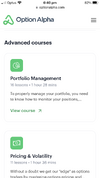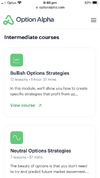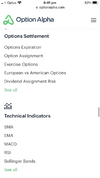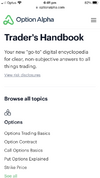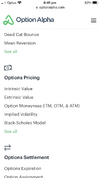wayneL
VIVA LA LIBERTAD, CARAJO!
- Joined
- 9 July 2004
- Posts
- 26,076
- Reactions
- 13,499
It turns out that such a simple concept is actually quite complex... And all to do with those pesky Greeks.In my initial self talk, I used 1) basic long Put or Call
I buy at X and expect to sell at X+something worth...
I also know the most I can lose if wrong or can not sell my losing "bet"
Yes, risk is defined "at expiry" absolutely by the cost of the option.
Yet there is the time frame in the intermediate, that is the time and price movements of the option between now and expiry.
What is your current Delta?
What is the gamma... Theta... Vega?
How is that affected by the current time *until* expiry? How much time have you got for the trade to play out? How will potential price movements affect these Greeks? (Especially Vega and Theta).
Moneyness dramatically affects these things especially closer to expiry.
Not trying to overcomplicate things here, but these are complexities which we really need to be aware of, because this is how the market snatches money from us, sans such awareness.
These things, just like all of us, I learnt the hard way.
As an aside, one may learn something about a particular long options market approach (primarily OTM puts) from one Nasim Nicholas Taleb (author of fantastic books such as Fooled by Randomness and The Black Swan). A thoroughly objectionable character, nevertheless a very good educator about these things.
When you lose it might just be picking the wrong market direction but it may also be picking the wrong option series to reflect your market view.





